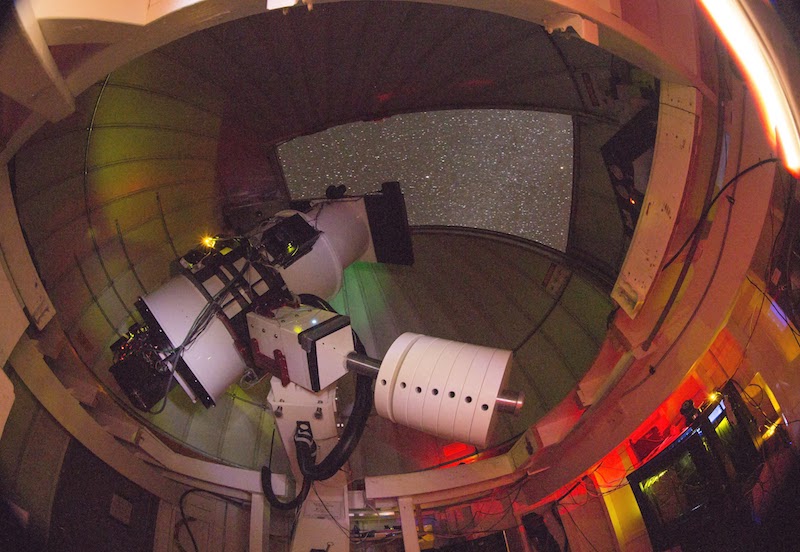ATLAS Update #19: 2018 March

Photograph by Henry Wieland
Observatories News
- Both telescopes are now fully operational and are performing as anticipated.
- Both telescopes have now been fitted with improved Schmidt correctors, significantly improving their image quality and allowing detection of objects one magnitude fainter than was possible with the originals.
Routine Asteroid Observations
- The two telescopes routinely observe alternate halves of the sky four times every night without human intervention. The system decides for itself whether it is safe to observe, adopts a schedule, and carries out the desired program as conditions permit. All ATLAS observations are automatically analyzed in real time; data for known asteroids are submitted to the Minor Planet Center automatically, and new asteroid discoveries are held until the next morning for vetting by a human being.
- If the weather is clear, each telescope covers 25% of the observable sky each night, taking four 30-second exposures of about 250 different patches of sky. The four exposures are separated by 15 minutes of time in order to measure the proper motions of all moving obects. On 92% of the nights at least one telesope has clear weather. You can watch ATLAS making its observations in real time at these websites:
ATLAS Haleakala
ATLAS Maunaloa
- As of March 1 2018, ATLAS has discovered 305 Near-Earth Asteroids (NEAs) and 17 Potentially Hazardous Asteroids (PHAs). Among regionally dangerous (> 30m) asteroids detected during very close approaches (< 0.01AU) to the Earth, ATLAS detects as many or more than any other asteroid survey, demonstrating its successful optimization as a ‘Last Alert’ system for potential impactors
Serendipitous Science
Although ATLAS is optimized for the discovery of Near-Earth Asteroids, it inevitably yields vast amounts of data that impinge on studies of the variability and motions of many different kinds of celestial object. Some of these phenomena are being studied by us and by our collaborators at University of Belfast and elsewhere.

ATLAS so far has discovered nine comets. The most spectacular of these is Comet Heinze, which is named after our own Ari Heinze. The comet reached perihelion on 21 February. For more information see this Sky and Telescope article. The image on the right was obtained remotely by Tenagra Observatory in Arizona
-
ATLAS has so far discovered more than 1,200 supernovae, mainly of Type 1a.
-
The large nightly ATLAS sky footprint has allowed searches for counterparts of gravitational wave sources from the LIGO-Virgo collaboration. ATLAS is a signatory to the agreement to share triggers. We searched for possible bright counterparts to binary black hole mergers and discovered the afterglow of a gamma ray burst before the high-x`energy source was localized on the sky.
-
During its first two years ATLAS observed 140 million stars hundreds of times and has detected variability (pulsation, rotation, occultations, outbursts) in 5 million objects. We will be releasing these light-curves through the Mikulski Archive for Space Telescopes. The ensuing 6 months has doubled the number of detections and increased the number of stars to 240 million. There will be periodic data releases and updates.


